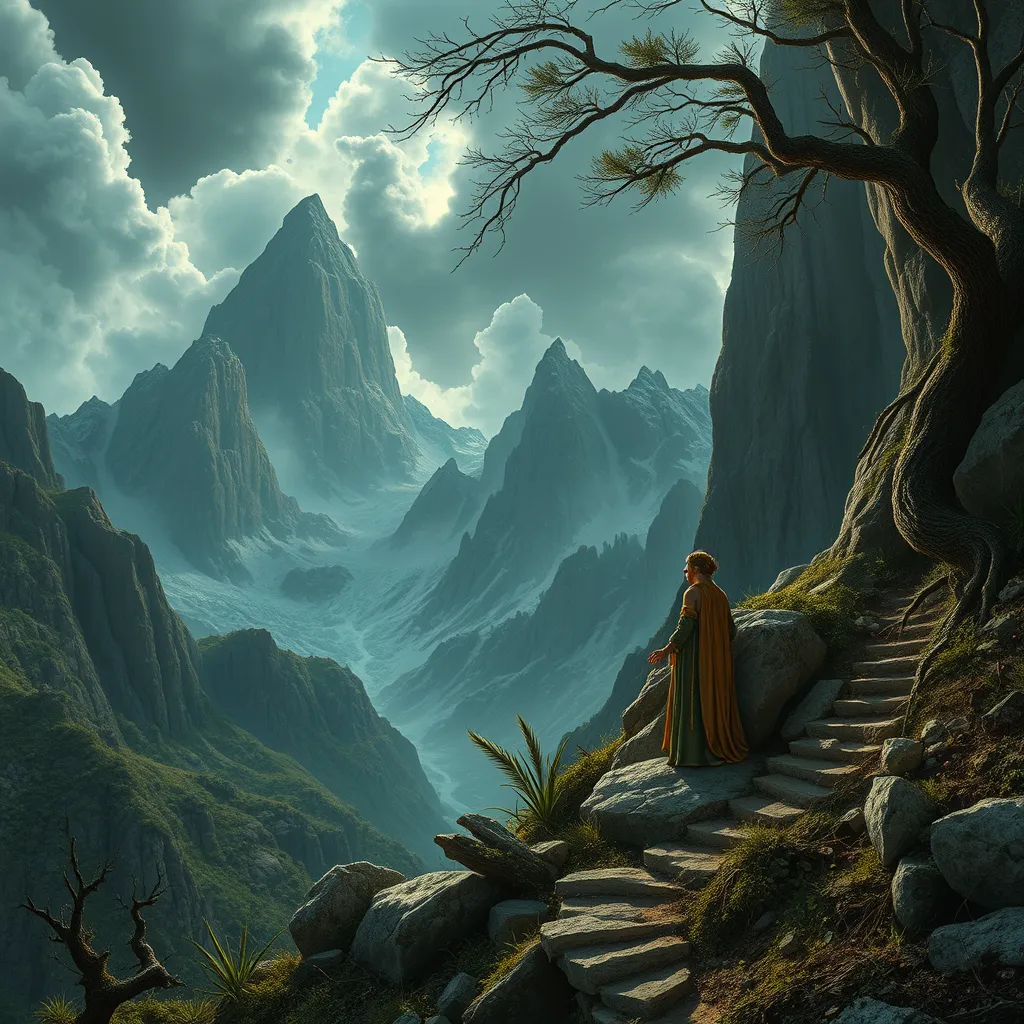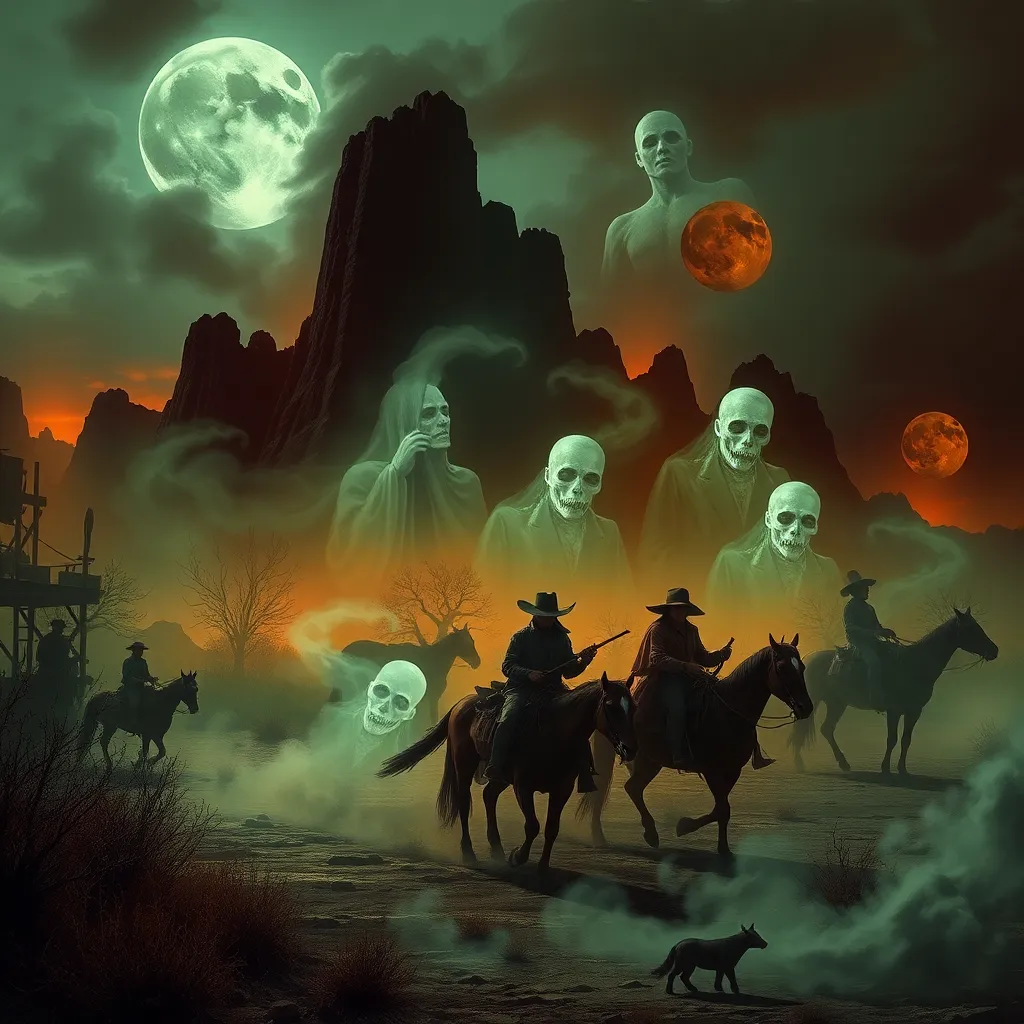The Nymphs of the Mountain: Exploring the Lore of the Oread and the Mountain Nymph
I. Introduction
Nymphs are enchanting figures in mythology, often depicted as beautiful maidens embodying the spirit of nature. In various cultures, nymphs are associated with specific geographical features, such as rivers, forests, and mountains. Among these captivating beings are the Oreads, the mountain nymphs of Greek mythology.
The Oreads are not merely mythical creatures; they represent the connection between nature and the divine, embodying the beauty and danger of mountainous landscapes. Understanding these figures provides insight into the ancient cultures that revered them, highlighting the importance of nature in their spiritual and everyday lives.
II. Historical Context of Nymphs in Greek Mythology
The term ‘nymph’ originates from the Greek word ‘nymphē,’ which means ‘young woman’ or ‘bride.’ Nymphs were often associated with various aspects of nature, serving as guardians and personifications of natural elements.
In Greek mythology, nymphs played a vital role, serving as companions to gods and goddesses and often assisting heroes on their quests. They were considered divine spirits of the natural world, embodying the beauty, mystery, and unpredictability of nature.
Nymphs are closely connected to nature, often dwelling in the environments they represent. This connection underscores their role as protectors of the earth, highlighting the reverence ancient cultures held for the natural world.
III. The Oreads: Guardians of the Mountains
Oreads are specifically the nymphs of the mountains, personifying the rugged beauty and perilous heights of mountainous regions. They are often depicted as graceful maidens, sometimes adorned with flowers or garlands that reflect the natural beauty of their habitats.
- Characteristics and Traits: Oreads are known for their agility, beauty, and connection to the mountainous terrain. They are often depicted as playful and spirited, embodying the wildness of nature.
- Famous Oreads: Some notable Oreads in mythology include Echo, who is known for her voice; and Phyllis, who was associated with the growth of plants and trees.
- Symbolism: In ancient texts, Oreads symbolize the untamed aspects of nature and the duality of beauty and danger found in mountainous landscapes.
IV. The Role of Mountain Nymphs in Mythological Tales
Mountain nymphs play crucial roles in various myths and legends, often intersecting with the stories of gods and heroes. They are depicted as both allies and obstacles in the journeys of mortals.
- Stories and Legends: One notable tale involves the Oread Echo, who fell in love with Narcissus. Her story illustrates the themes of unrequited love and the consequences of vanity.
- Relationship with Gods and Heroes: Oreads often aided heroes like Hercules, providing guidance and shelter during their quests.
- Connection to Natural Phenomena: Many myths attribute natural events, like rockslides or avalanches, to the whims of these nymphs, emphasizing their power over the mountainous landscapes.
V. Artistic Representations of Oreads and Mountain Nymphs
The beauty of Oreads has inspired countless artists throughout history. From ancient pottery to modern sculptures, their representations reflect the allure and mystique of these mythical beings.
- Depictions in Ancient Art: Oreads were often portrayed in frescoes and pottery, depicted gracefully among the mountains and flora, emphasizing their connection to nature.
- Influence on Renaissance and Modern Art: During the Renaissance, Oreads became symbols of beauty and nature in paintings and literature, influencing artists like Botticelli and Raphael.
- Cultural Significance: These artistic representations highlight society’s ongoing fascination with the natural world and the mythical figures that embody it.
VI. Oreads in Literature and Poetry
Oreads have found a prominent place in literature and poetry, often symbolizing themes of beauty, nature, and the sacred feminine.
- Prominent Literary Works: The works of poets such as John Keats and Percy Bysshe Shelley feature Oreads, illustrating their importance in Romantic literature.
- Themes in Poetry: Common themes associated with mountain nymphs include the passage of time, the beauty of nature, and the exploration of love and longing.
- Analysis of Key Passages: In many poems, Oreads serve as metaphors for the fleeting nature of beauty and the deep connection between humanity and the natural world.
VII. The Legacy of Oreads in Contemporary Culture
The legacy of Oreads continues to thrive in contemporary culture, as modern interpretations and adaptations of these mountain nymphs appear in various forms of media.
- Modern Interpretations: Oreads are often reimagined in fantasy literature and films, reflecting contemporary themes of environmentalism and femininity.
- Influence on Popular Media: Films, video games, and novels frequently draw on the imagery and stories of mountain nymphs, showcasing their enduring appeal.
- Ongoing Fascination: The allure of mountain nymphs persists, reminding us of the beauty and mystery of the natural world.
VIII. Conclusion
The Oreads and mountain nymphs hold a significant place in mythology, representing the intersection of humanity and nature. Their stories and characteristics reflect the ancient cultures that revered them, showcasing the importance of the natural world in spiritual beliefs.
As we explore the legacy of these mystical beings, we see their influence permeating literature, art, and contemporary culture. The enduring allure of Oreads serves as a reminder of the beauty and complexity of nature, inviting us to reflect on our relationship with the environment.
Ultimately, the fascination with mountain nymphs highlights our ongoing desire to connect with the natural world and the myths that continue to shape our understanding of it.



